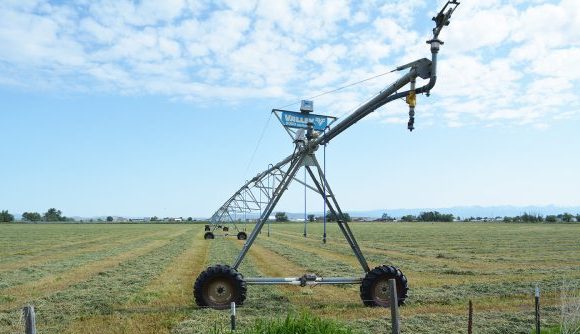Out of the past: Old District 1: From Eastern Oregon to Portland
Published 5:00 pm Wednesday, July 1, 2009
As part of the District Tournament Project, I will post a history of each district. Often, as you will see with District 1, where we are today is nowhere near where we started. Here is the first 20 or so years of the Valley-10.
From an Eastern Oregon league to a Portland Metro Private school league, District 1 has swung from one extreme to the other in its 99-year history.
Just one of the current schools in District 1 were around when the forerunner to the OSAA put into motion the concept of an interscholastic basketball tournament every year. The Valley-10, as it is known now, is 100-percent private schools, several of which started as high schools within the last 10 years.
The 20’s and early 30’sIn the 20’s, when the state tournament was a single class tournament, there were primarily 10 districts in the state and 10 teams in the state tournament. There were times when District 10, the Portland Interscholastic League (PIL) wasn’t a part of the association. But by and large, there were 10 districts in the 20’s.
Some of these leagues were well run, with cohesive schedules and energetic district tournaments. Eastern Oregon’s District 1 fell into this category. Even the media coverage of the schools in Eastern Oregon was superb.
Relative to many of the other districts, particularly those in Willamette Valley, there were more small schools than large schools in Eastern Oregon’s District 1. For every La Grande, there were two Josephs or Muddy Creeks and for every Baker there were two Haines and Enterprises. Because of this, no other district had better representation by small schools at the state tournament in Salem.
Indeed, Joseph won two of the first three District 1 championships, while Wallowa won three others in the first 10 years of the districts existence. La Grande and Baker won the other five trips in the first decade of the district.
By the early 1930’s, there was growing sentiment that the small schools should have better representation at the state level. In Eastern Oregon however, many small schools remained competitive with the two largest schools in the district. The era from 1930 to 1935 was dominated by Baker and La Grande, but the smallest schools made them sweat to win the titles.
In 1930, after sweeping through a largely small school sub-district tournament with wins over Richland (50-31), Halfway (60-10) and Haines (64-8), Baker knocked off Wallowa early in the district tournament and Union for the championship. The following year, the sub-district tournament was comparatively easy with Muddy Creek (59-5) and Richland (41-7) providing little resistance to Baker. Once the district tournament started, Ontario (33-31) provided a stiff test in the first round followed by a nip and tuck affair with Wallowa (26-22) in the second round. Wallowa nearly upset Baker in the semifinals with Baker barely holding on, 28-25.
Despite four times the student population, the road through the district was anything but smooth for Baker in the early 30’s.
Conversely, Ashland, which along with Medford, had dominated the scene in southern Oregon, met little resistance in its district tournament, easily dispatching Talent in two games 41-10 and 53-21. Pendleton swept through its district tournament as well, beating Arlington 43-16 and Umatilla 62-6.
While other small schools around the state floundered in the face of the bigger schools, the smaller schools in eastern Oregon rose up and challenged their bigger counterparts, often taking them to the brink before succumbing late. True, the sub-district scores were often lopsided, once the district tournament lights came on; the small schools came to play.
But by the early 30’s, change was in the air. The state tournament expanded from 10 teams to 12 but there was still controversy. Many were upset over the treatment for Salem High School, hosts of the tournament and also one of the largest schools in the state. Salem received an automatic bid to the state tournament each year. To top it off, they received a bye into the semifinals each year as well. This did not sit well with the other schools, and rightfully so.
There was increasing sentiment to change the tournament and the state association made the decision to expand to 16 teams. The state was divided into 16 districts.
1932-1940District 1 remained in Eastern Oregon during this period. During this era the state association tried many different solutions to creating the best possible state tournament. Expanding from 12 teams to 16 for the 1932 was a good start. It eliminated the byes and made for an even tournament.
But it still left the small schools in the cold. They still had to compete with the larger schools for spots in the state tournament.
With the addition of six districts to the state association, some districts divided. Prior to the expansion, District 1 included six counties: Malheur, Harney, Grant, Union, Baker and Wallowa. After the expansion, Harney, Malheur and Grant counties were annexed to become District 2 leaving Union, Wallowa and Baker Counties in District 1.
The 16 district system lasted until 1940 but underwent another revision after the 1933-1934 season. At this point, the state association created small-school-only districts for schools with enrollments under 150. The small schools were moved into district numbers 13-16. Small schools from District 1 now competed for the District 13 title with small schools from Districts 2 and 3 in eastern Oregon. From 1932-40, only Baker and La Grande captured the District 1 crown. After 1940, the state created a second classification for the “B” schools.
Mark Deuel includes other historical stories at oregonhoopshistory.blogspot.com. E-mail any comments or questions to hoops1a@hotmail.com.









